Complete Solutions to Problems Based On Mixed Concepts of chapter KINETIC THEORY OF GASES AND THERMODYNAMICS of Class 11 book with complete answers and questions
| Class 11 | PHYSICS |
| Chapter | KINETIC THEORY OF GASES AND THERMODYNAMICS |
| A2Z | Problems Based On Mixed Concepts |
| Number Of Questions | 49 |
| Academic Year | 2023-24 |
Three moles of an ideal monoatomic gas per form a cyclic as shown in the figure. The gas temperature in different states are: `T_(1) = 400 K, T_(2) = 800 K, T_(3) = 2400 K and T_(4) = 1200 K`. The work done by the gas during the cyclic is
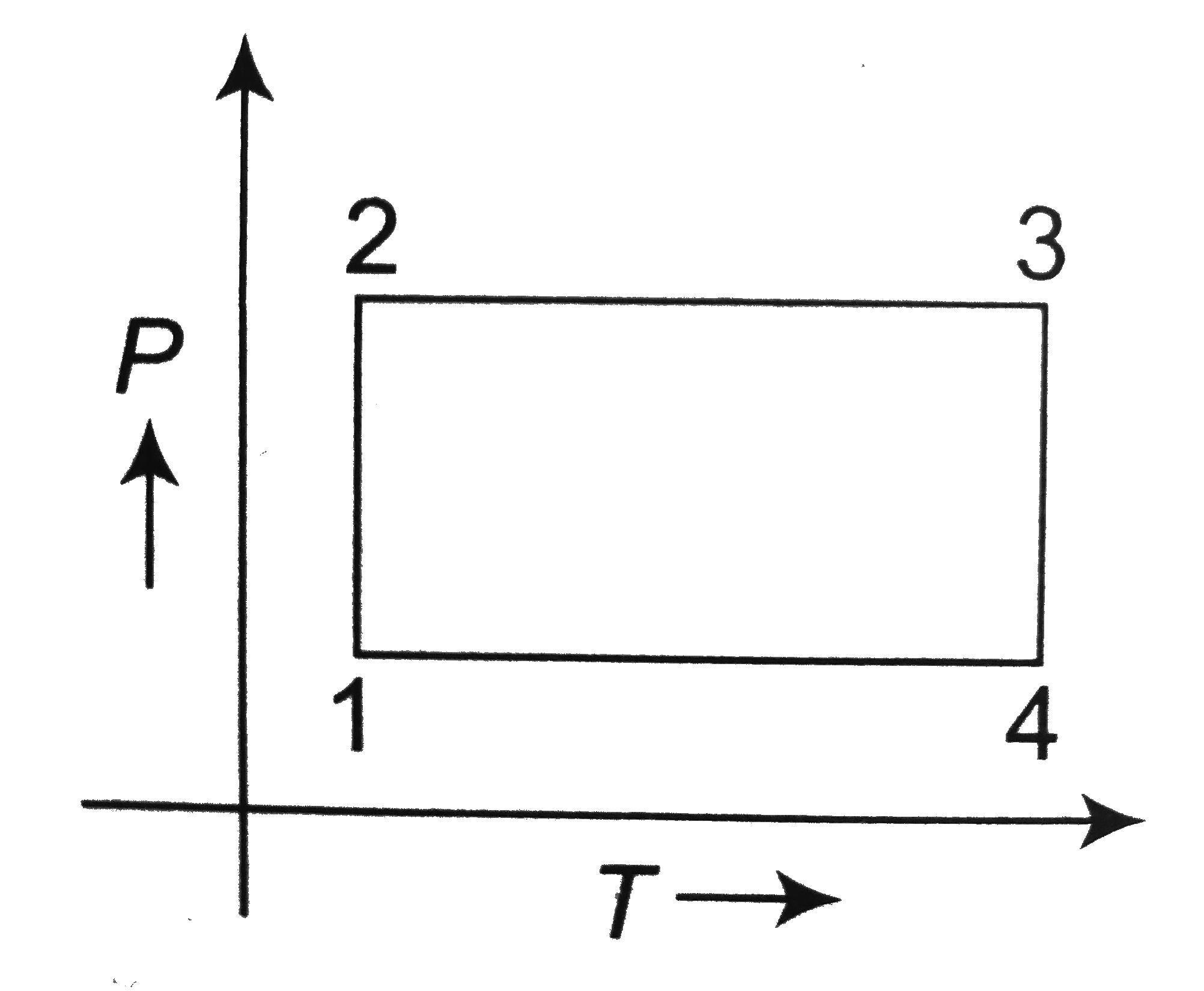 06:23View Solution
06:23View SolutionOne mole of an ideal gas undergoes a process in which `T = T_(0) + aV^(3)`, where `T_(0)` and `a` are positive constants and V is molar volume. The volume for which pressure with be minimum is
03:29View SolutionIn the above question, maximum pressure attainable is
01:44View SolutionIn a certain gas, the ratio of the velocity of sound and root mean square velocity is `sqrt(5//9)`. The molar heat capacity of the gas in a process given by `PT = constant` is.
(Take `R = 2 cal//mol K`). Treat the gas as ideal.09:50View SolutionArgon gas is adiabatically compressed to half its volume. If `P, V` and `T` represent the pressure, volume and temperature of the gaseous, respectively, at any stage, then the correct equation representing the process is
02:38View SolutionA fixed mass of helium gas is made to undergo a process in which its pressure varies linearly from `1 kPa` to `2 kPa`, in relation to its volume as the latter varies from `0.2 m^(3)` to `0.4 m^(3)`. The heat absorbed by the gas will be
02:48View SolutionOxygen gas is made to undergo a process in which its molar heat capacity `C` depends on its absolute temperature `T` as `C = alpha T`. Work done by it when heated from an initial temperature `T_(0)` to a final temperature `2 T_(0)`, will be
02:06View SolutionIf the ratio of specific heat of a gas of constant pressure to that at constant volume is `gamma`, the change in internal energy of the mass of gas, when the volume changes from `V` to `2V` at constant pressure `p` is
01:16View SolutionA gas is at 1 atm pressure with a volume `800 cm^(3)`. When `100 J` of heat is supplied to the gas, it expands to `1L` at constant pressure. The change in its internal energy is
01:03View Solution`14 g of N_(2)` gas is heated in a closed rigid container to increase its temperature from `23^(@)C` to `43^(@)C`. The amount of heat supplied to the gas is
03:37View SolutionA fixed mass of a gas is first heated isobarically to double the volume and then cooled isochorically to decrease the temperature back to the initial value. By what factor would the work done by the decreased, had the process been isothermal?
02:39View SolutionAn ideal heat engine has an efficiency `eta`. The cofficient of performance of the engine when driven backward will be
01:09View SolutionTwo moles of helium gas are taken along the path `ABCD` (as shown in Fig.) The work done by the gas is
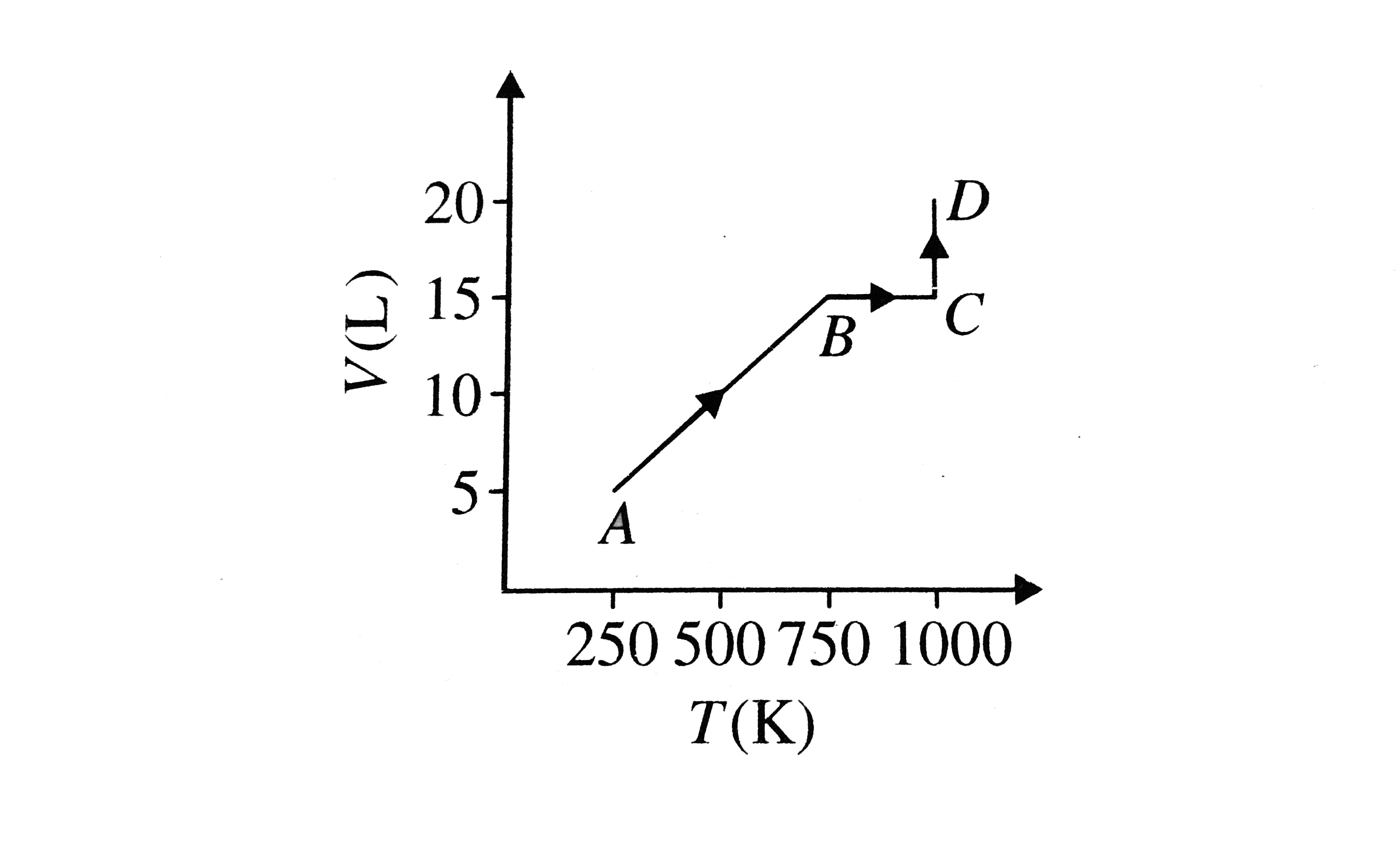 02:23View Solution
02:23View SolutionFigure shows the adiabatic curve for `n` moles of an ideal gas, the bulk modulus for the gas corresponding to the point `P` will be
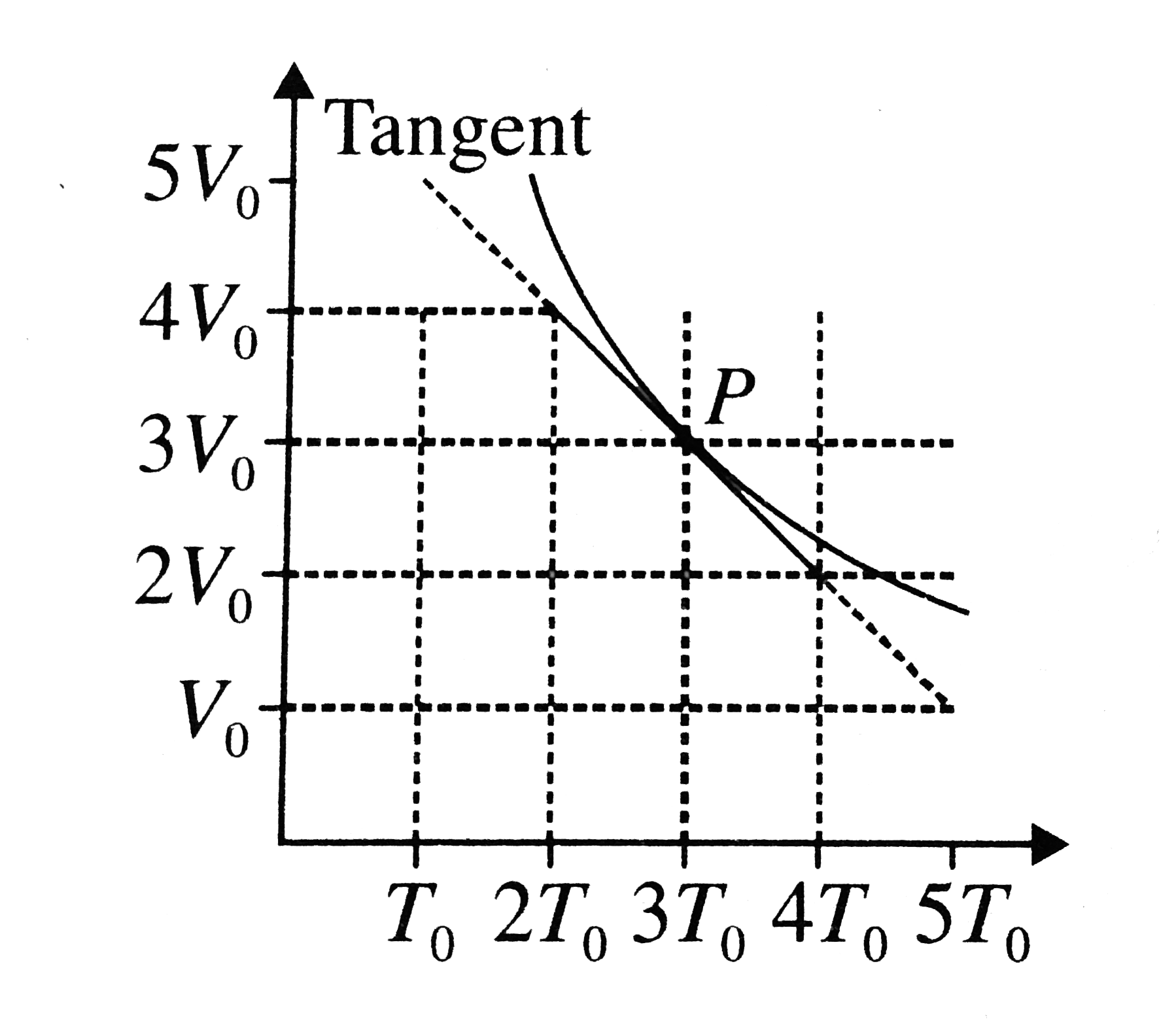 02:40View Solution
02:40View SolutionTwo moles of an ideal gas is contained in a cylinder fitted with a frictionless movalbe piston, exposed to the atmosphere, at an initial temperature `T_(0)`. The gas is slowly heated so that its volume becomes fout times the initial value. The work done by gas is
01:41View SolutionThe equation of state for a gas is given by `PV = eta RT + alpha V`, where `eta` is the number of moles and `alpha` a positive constant. The initial pressure and temperature of 1 mol of the gas contained in a cylinder is `P_(0)` and `T_(0)`, respectively. The work done by the gas when its temperature doubles isobarically will be
01:58View SolutionA sound wave passing through air at `NTP` produces a pressure of `0.001` dyne/`cm^(2)` during a compression. The corresponding change in temperature (given `gamma = 1.5` and assume gas to be ideal) is
05:19View SolutionA container of volume `1m^3` is divided into two equal parts by a partition. One part has an ideal gas at 300K and the other part is vacuum. The whole system is thermally isolated from the surroundings. When the partition is removed, the gas expands to occupy the whole volume. Its temperature will now be .......
02:48View SolutionA cannot engine has efficiency `(1)/(6)`. If temperature of sink is decreased by `62^(@)C` then its efficiency becomes `(1)/(3)` then the temperature of source and sink:
06:22View SolutionIn a thermodynamic process, pressure of a fixed mass of a gas is changed in such a manner that the gas release `20 J` of heat and `8 J` of work is done on the gas. If initial internal energy of the gas was `30 J`, what will be the final internal energy?
02:02View SolutionAn ideal heat engine working between temperature `T_(H)` and `T_(L)` has efficiency `eta`. If both the temperature are raised by `100 K` each the new efficiency of heat engine will be
01:12View SolutionFour moles of hydrogen, 2 moles of helium and 1 mole of water form an ideal gas mixture. What is the molar specific heat at constant pressure of mixture ?
01:10View SolutionIn a adiabatic process pressure is increased by `2//3%` if `C_(P)//C_(V) = 3//2`. Then the volume decreases by about
01:35View SolutionTwo cylinders A and B fitted with pistons contain equal amounts of an ideal diatomic gas at 300K. The piston of A is free to move, while that B is held fixed. The same amount of heat is given to the gas in each cylinder. If the rise in temperature of the gas in A is 30K, then the rise in temperature of the gas in B is
02:55View SolutionA gas under constant pressure of `4.5 xx 10^(5) Pa` when subjected to `800 kJ` of heat, changes the volume from `0.5 m^(3) to 2.0 m^(3)`. The change in internal energy of the gas is
02:23View SolutionIf for hydrogen `C_(P) - C_(V) = m` and for nitrogen `C_(P) - C_(V) = n`, where `C_(P)` and `C_(V)` refer to specific heats per unit mass respectively at constant pressure and constant volume, the relation between `m` and `n` is (molecular weight of hydrogen = 2 and molecular weight or nitrogen = 14)
01:18View SolutionOne mole of an ideal gas at temperature `T_` expands slowly according to the law `p/V=` constant.
Its final temperature is `T_2`. The work done by the gas is02:31View SolutionTwo moles of an ideal gas at temperature `T_(0) = 300 K` was cooled isochorically so that the pressure was reduced to half. Then, in an isobaric process, the gas expanded till its temperature got back to the initial value. Find the total amount of heat absorbed by the gas in the processs
06:14View SolutionDuring an adiabatic process, the pressure of a gas is found to be proportional to the cube of its absolute temperature. The ratio `C_P//C_V` for the gas is
01:22View SolutionA gaseous mixture consists of 16g of helium and 16 g of oxygen. The ratio `(C_p)/(C_v)` of the mixture is
02:31View SolutionSuppose a diatomic gas gets ionised to a certain extent without any expenditure of heat energy. If the fractional change in the number of moles of the gas be `eta`, then ignoring any enegy loss, the fractional change in the temperature of the gas will be
05:21View SolutionA monoatomic ideal gas undergoes a process `ABC`. The heat given to the gas is
 03:25View Solution
03:25View SolutionA balloon containing an ideal gas has a volume of `10 litre` and temperature of `17^(@)`. If it is heated slowly to `75^(@)C`, the work done by the gas inside the balloon is (neglect elasticity of the balloon and take atmospheric pressure as `10^(5)` Pa)
02:52View SolutionT-V curve of cyclic process is shown below, number of moles of the gas are n find the total work done during the cycle.
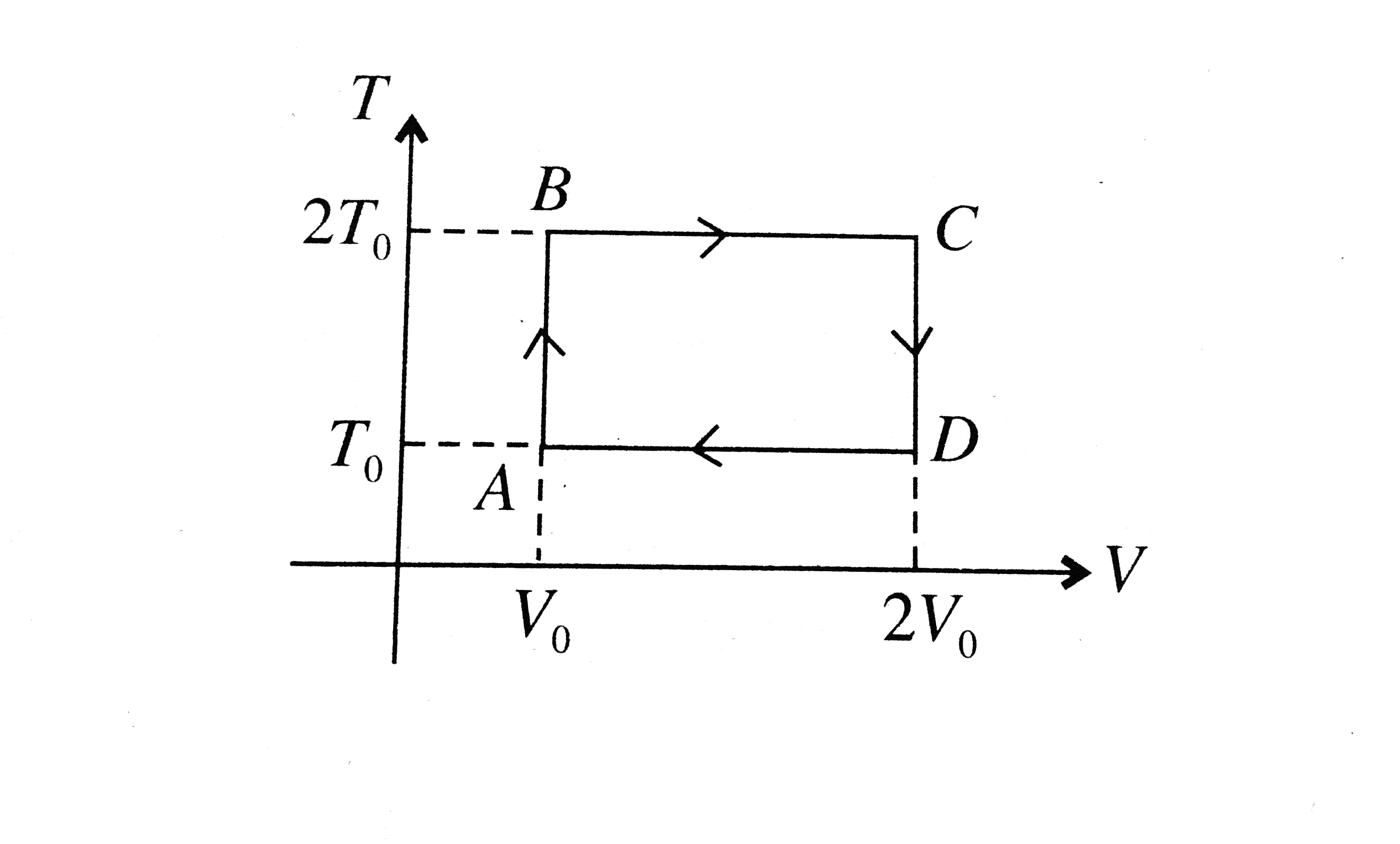 01:37View Solution
01:37View SolutionP-T curve of a cyclic process is shown. Find out the works done by the gas in the given proces if number of moles of the gas are n.
 01:47View Solution
01:47View SolutionA sample of an ideal gas has pressure `p_(0)`, volume `V_(0)` and tempreture `T_(0)`. It is isothermally expanded to twice its original volume.It is then compressed at constant pressure to have the original volume `V_(0)`. Finally, the gas is heated at constant volume to get the original temperature.
(a) Show the process in a V-T diagram
(b) Calculate the heat absorbed in the process.08:40View SolutionFigure shows a vessel partitioned by a fixed diathermic separator. Different ideal gases are filled in the two parts. The rms speed of the molecules in the left part equals the mean speed of the molecules in the right part. Calculate the ratio of the mass of a molecule in the left part to the mass of a molecule in the right part.
 04:12View Solution
04:12View SolutionThe internal energy of a monatomic ideal gas is `1.5 nRT`.One mole of helium is kept in a cylinder of cross section `8.5 cm^(2)`. The cylinder is closed by a light frictionless piston. The gas is heated slowly in a process during which a total of `42J` heat is given to the gas. If the temperature rise through `2^(@)C`, find the distance moved by the piston. atmospheric pressure `=100 kPa.`
02:47View SolutionA sample of ideal gas `(gamma = 1.4)` is heated at constant pressure. If an amount `140 J` of heat is supplied to the gas, find (a) the changes in internal energy of the gas, (b) the work done by the gas.
03:20View SolutionP-V curve of a diatomic gas is shown in the Fig. Find the total heat given to the gas in the process `A rarr B rarr C`
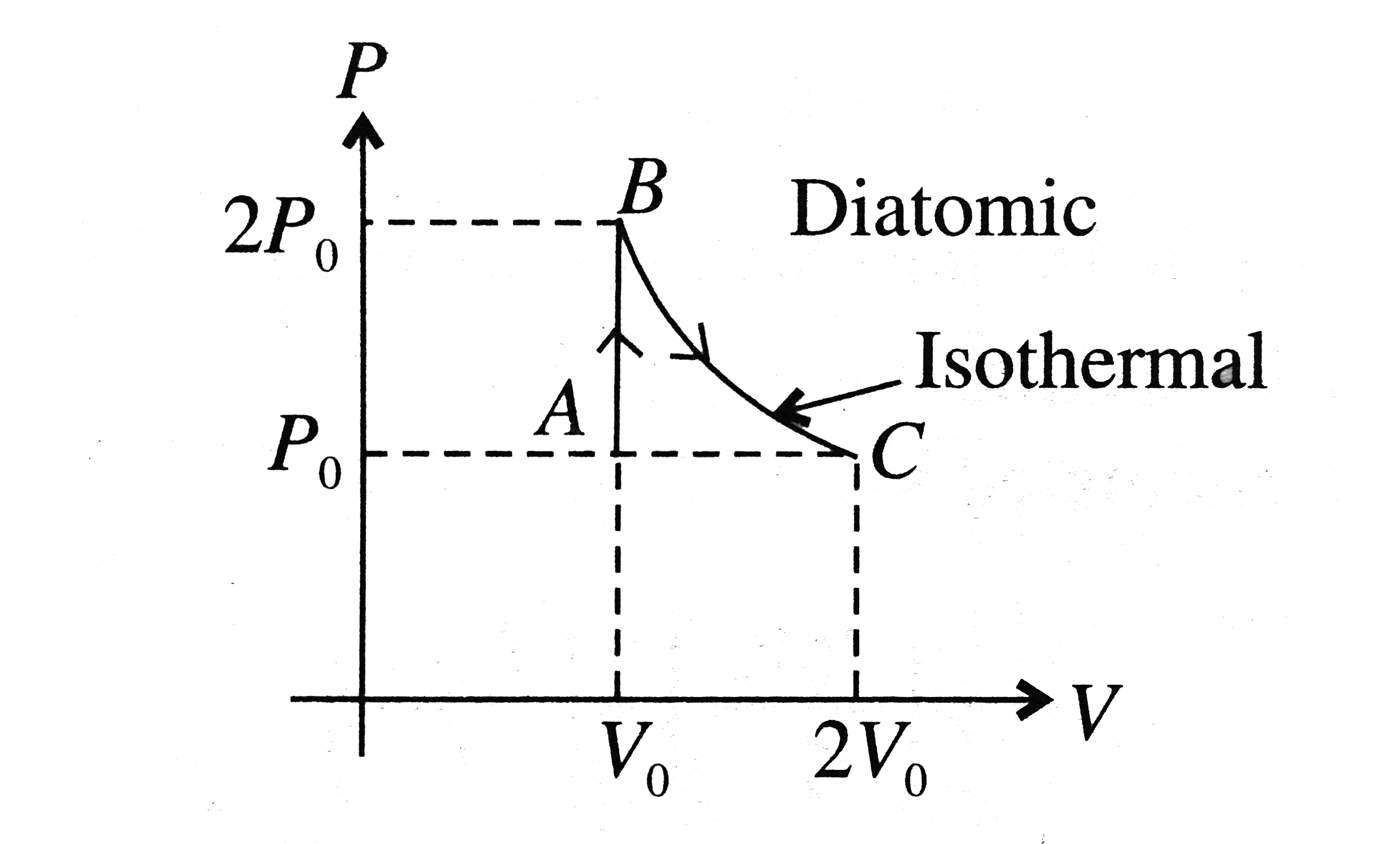 04:10View Solution
04:10View SolutionFigure shows a cyclic process `ABCDBEA` performed on an ideal cycle. If `P_(A) = 2 atm, P_(B) = 5 atm and P_(6) = 6 atm. V_(E) - V_(A) = 20 "litre"`, find the work done by the gas in the complete, process (`1 atm. "Pressure" = 1 xx 10^(5) Pa`)
 06:04View Solution
06:04View SolutionFind the work done by gas going through a cyclic process shown in figure?
 02:49View Solution
02:49View SolutionIn the P-V diagram shown in figure, `ABC` is a semicircle. Find the work done in the process `ABC`.
 02:41View Solution
02:41View SolutionA gas has molar heat capacity `C = 4.5 R` in the process `PT = constant`. The number of degrees of freedom of molecules in the gas is
05:53View SolutionA gaseous mixture enclosed in a vessel consists of one gram mole of a gas A with `gamma=(5/3)` and some amount of gas B with `gamma=7/5` at a temperature T.
The gases A and B do not react with each other and are assumed to be ideal. Find the number of gram moles of the gas B if `gamma` for the gaseous mixture is `(19/13)`.04:40View SolutionOne mole of a gas mixture is heated under constant pressure, and heat required Q is plotted against temperature difference acquired. Find ghe value of `gamma` for mixture.
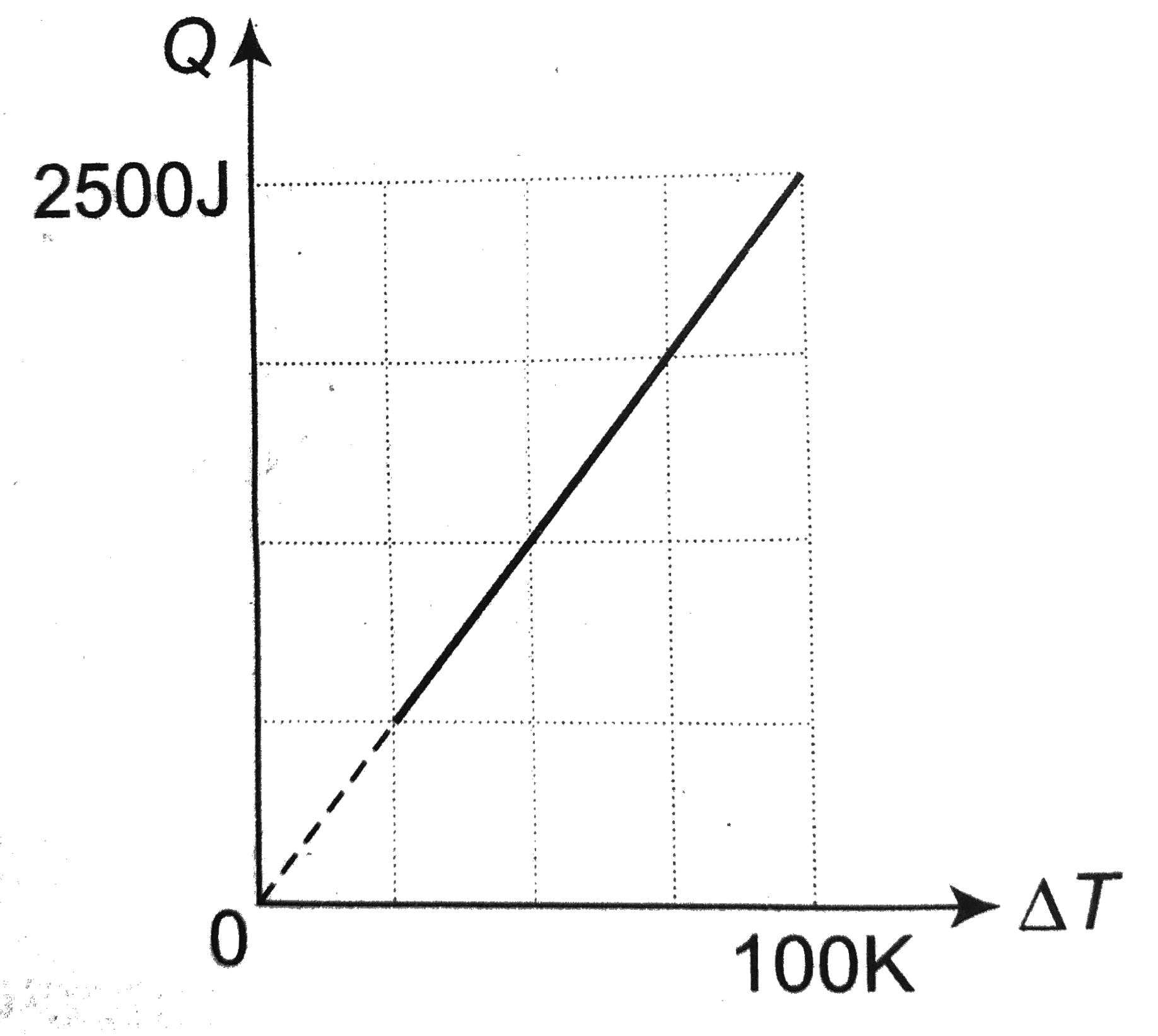 07:05View Solution
07:05View SolutionOne mole of an ideal monoatomic gas undergoes a process as shown in the figure. Find the molar specific heat of the gas in the process.

R is a gas constant.02:40View SolutionA gas is undergoing an adiabatic process. At a certain stage A, the values of volume and temperature `(V_(0), T_(0))`. From the details given in the graph, find the value of adiabatic constant `gamma`
 04:42View Solution
04:42View SolutionThe heat supplied to one mole of an ideal monoatomic gas in increasing temperature from `T_(0)` to `2T_(0)` is `2RT_(0)`. Find the process to which the gas follows
03:11View Solution
Problems Based On Mixed Concepts questions and complete solutions for chapter KINETIC THEORY OF GASES AND THERMODYNAMICS of A2Z PHYSICS (HINGLISH) of Class 11
